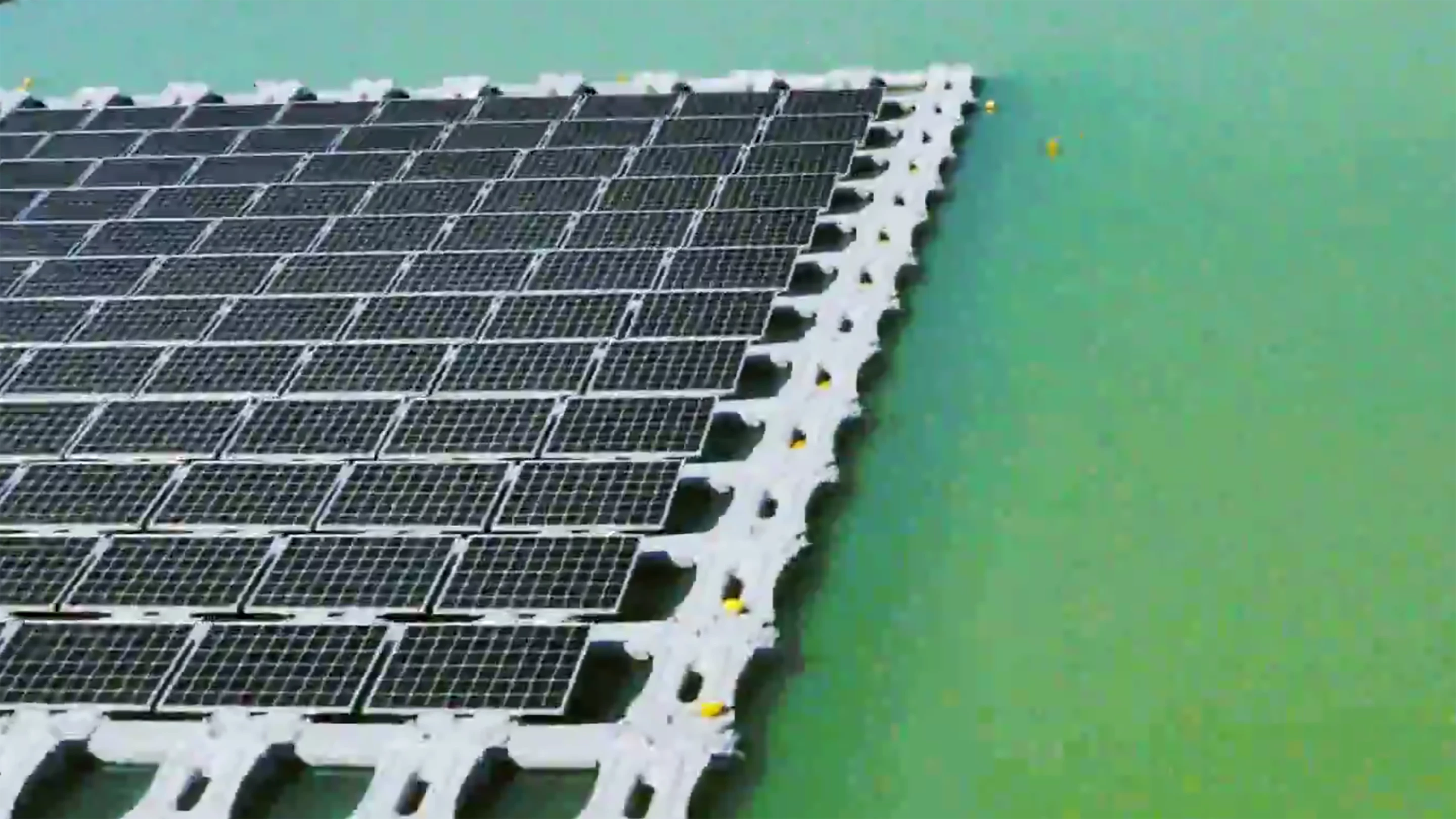Construction has been completed on two enormous floating solar power plants located in the Nishihira Pond and Higashihira Pond in Kato City, Japan. According to The Kyocera Corporation and the Century Tokyo Leasing Corporation, who partnered up to build the instillations, the combined output of the solar plants will be around 3,300 megawatt hours (MWh) per year, and provide electricity to an estimated 920 households.
The vast floating power plants represent an attractive, and more importantly safe option for electricity generation in the context of the uncertainty that has prevailed in the wake of the 2011 Fukashima incident. Furthermore, the water-located solar cells will reportedly generate more electricity than their roof-based counterparts, as they are constantly cooled by the water beneath them.
The two facilities are comprised of 11,256 255-watt Kyocera modules on a high-density polyethylene platform, and are reportedly capable of withstanding typhoon conditions. It is thought that the shade produced by the vast power plants should reduce both algae growth and water evaporation.
Another much larger facility planned in the Yamakura Dam reservoir will boast roughly 50,000 modules and have an output of around 15,635 Mwh per year.
For an aerial view of the power plants, check out the video below
Source: Kyocera Corporation






